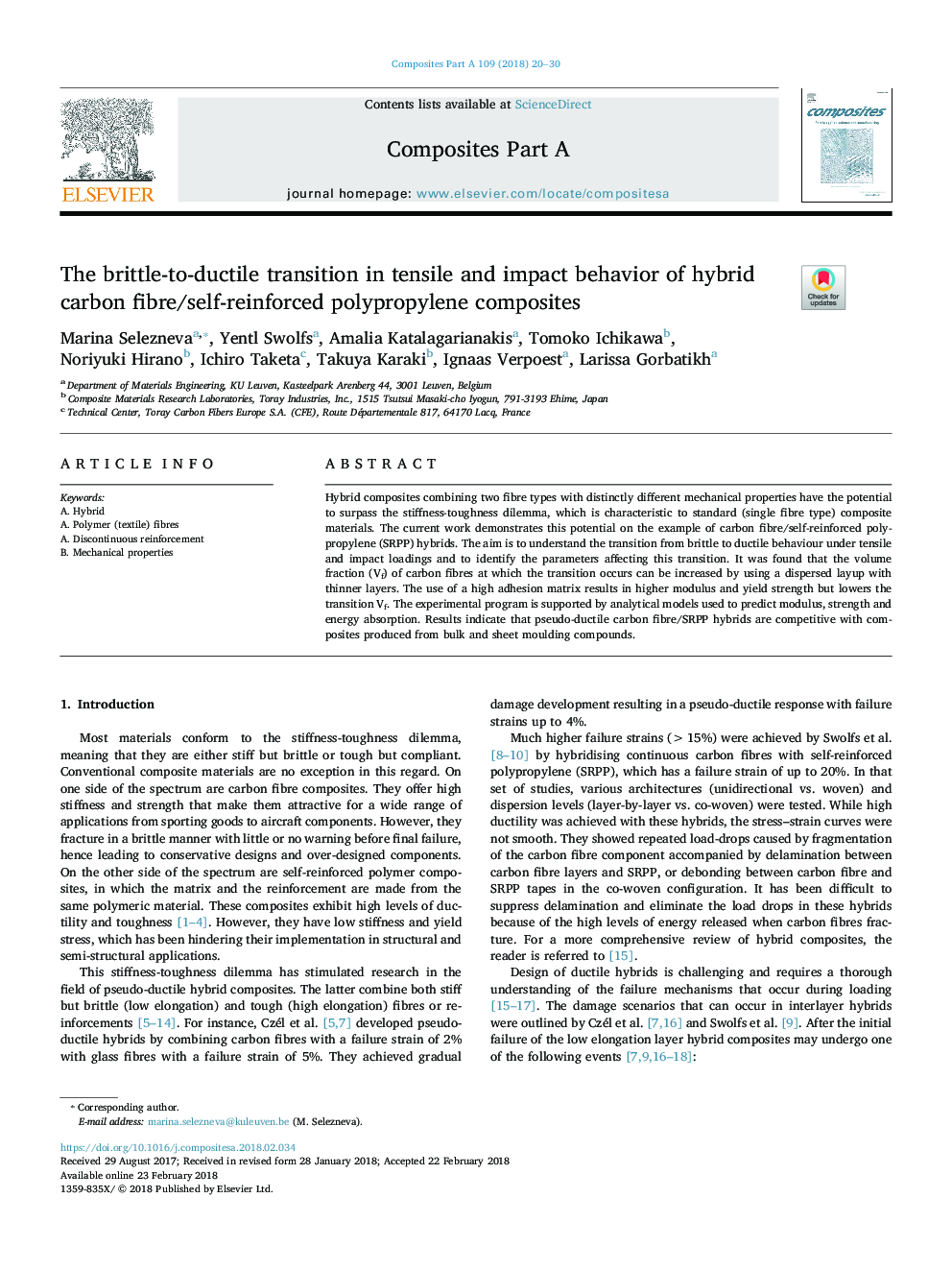| Article ID | Journal | Published Year | Pages | File Type |
|---|---|---|---|---|
| 7889509 | Composites Part A: Applied Science and Manufacturing | 2018 | 11 Pages |
Abstract
Hybrid composites combining two fibre types with distinctly different mechanical properties have the potential to surpass the stiffness-toughness dilemma, which is characteristic to standard (single fibre type) composite materials. The current work demonstrates this potential on the example of carbon fibre/self-reinforced polypropylene (SRPP) hybrids. The aim is to understand the transition from brittle to ductile behaviour under tensile and impact loadings and to identify the parameters affecting this transition. It was found that the volume fraction (Vf) of carbon fibres at which the transition occurs can be increased by using a dispersed layup with thinner layers. The use of a high adhesion matrix results in higher modulus and yield strength but lowers the transition Vf. The experimental program is supported by analytical models used to predict modulus, strength and energy absorption. Results indicate that pseudo-ductile carbon fibre/SRPP hybrids are competitive with composites produced from bulk and sheet moulding compounds.
Related Topics
Physical Sciences and Engineering
Materials Science
Ceramics and Composites
Authors
Marina Selezneva, Yentl Swolfs, Amalia Katalagarianakis, Tomoko Ichikawa, Noriyuki Hirano, Ichiro Taketa, Takuya Karaki, Ignaas Verpoest, Larissa Gorbatikh,
